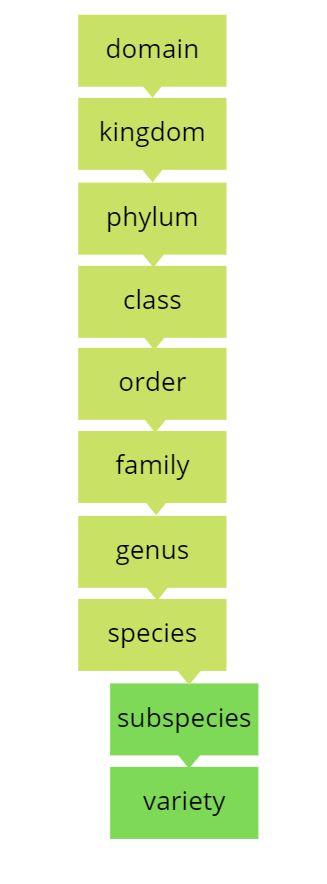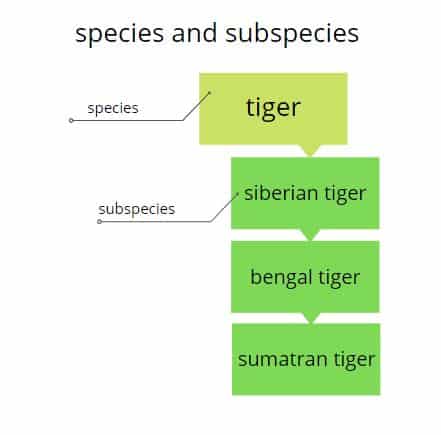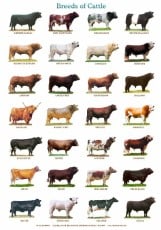Zoology has a classification that often confuses many of us, but it’s a system that largely works well, and has improved and been built upon over time. In fact, areas have also been amalgamated together.
Focussing on the animal kingdom, one common confusion lies around the difference between varieties and subspecies, or variety and subspecies. So, in this article, we’ll offer a clearer understanding of the difference between varieties and subspecies, in the animal kingdom.
But first, here’s the quick takeaway answer, then we’ll get into more details…
What Is the Difference between Varieties and Subspecies? Varieties are a taxonomic ranking below subspecies, and subspecies are a taxonomic ranking below species. Subspecies and varieties are abbreviated to “subsp” and “var”. Simple, Acquired, Breeds and True Varieties are the four main types of varieties stemming from subspecies.
If you’re left wondering why tigers, cats, lions, leopards, and cheetahs are related – or come from the same family, then that’s because animal classification can seem complex for non-experts.
So let’s get into the details separating variety and subspecies…
Ranking differences between varieties and subspecies
In the taxonomic category, a variety ranks below subspecies, whereas subspecies rank below species.

Here’s the taxonomic graph that helps explain this idea…
So varieties are a lower classification to subspecies when moving downward from the order, subspecies are the first division of species, whereas varieties are the second division of species.
Varieties are members of the same subspecies or species, who may exhibit different varieties of form or behavior as the name suggests. Varieties officially mean the display of minor but permanent and heritable characteristics.
Why are there varieties below subspecies?
It’s becoming common for many to confuse what subspecies and varieties are. Subspecies are animals that have been geographically isolated, dispersed, or divided into different regions, making them different from the main species, largely through adaptations.
So this geographical dispersion or isolation, allows these animals to develop features, structure, size, and other features i.e. morphological characteristics that are different from the species classification.
For example, “tiger” is a species, and below it are subspecies such as Siberian tiger, Bengal tiger, Sumatran tiger e.t.c – which are all brought about through geographical dispersion and adaptation.
Subspecies are indicated by the abbreviation “subsp”, whereas varieties are indicated by the abbreviation “var”.

These subspecies when placed next to one another will show clear-cut and obvious differences, not just in appearance but in other areas, such as their eating, mating, growing patterns, and their habitats.
Varieties are animals that come under subspecies, but who are less or vaguely recognizable with differences and are not genetically isolated. Although some of these variations can be more obvious.
So in contrast to subspecies, varieties of animals that fall under subspecies may be obvious or might barely show any apparent differences from their subspecies. However, any minor – or major differences are embedded and are heritable from one generation to another.
So it’s very common for someone to mistake varieties as subspecies because they don’t arise due to different geographical boundaries and their differences are sometimes vague – unless you’re a zoology expert.
How are varieties differentiated from subspecies?
While it’s not exactly clear how or why varieties are divided from subspecies. According to many experts and professionals, there are generally four overarching variations among animals.
All these four types of variations further demonstrate why “varieties” differ from “subspecies”.
Simple varieties
This type of variety exists in subspecies because they simply have very minor differences from subspecies.
This could be mere differences such as color, size, structure, or any other minor factors that are less observable by general viewing.
This type of variety is a common reason for variation among many subspecies. This kind of variation, especially based on color or size is more common among the Mammalia.
Acquired varieties
This is the type of variation in animals that comes from the degree to which subspecies acquire nutrient, quality food, and other right temperatures that best suits their body.
So as you might guess, those that have access to an abundance of food, nutrients, and the right temperature may have a healthier, size, structure, and composition, which will be inherited by their offspring.
And on the other hand, animals that lack nutrients, good quality food, and less favorable environments like temperature, habitats, etc, will likely have a weaker body, appearance, and so on …which will again be inherited by its offspring.
So as such, this imbalance in the acquisition of nutrients, quality food, and other environmental factors by the subspecies will bring variations within them, according to their growth based on the nutrients they get.
One best example of this is the variations in the horns of the deer family, which differ widely depending on the quality of food they get.
In fact, if these conditions of nutrient, quality food, and other appropriate factors are acquired by the subspecies at the same level, the variations that arise could be removed altogether.
Breeds
Some varieties come as a result of a crossbreed between different subspecies or species, often due to geographical isolation and or sometimes through man-made impacts like local environmental changes or even climate change.
So when animals of a subspecies are geographically isolated, they have fewer chances of exchanging genetic materials with their own kind, which leads to cross-mating or producing hybrids.
This is also the same way that subspecies divide into other species when animals from the same species are separated, they potentially mate with other species that then breed hybrids.
So when animals of subspecies mate with other subspecies, it produces hybrids that are termed as a variation from the original subspecies.
These breeds will inherit genetics from the father and the mother – who are from two different subspecies.
Going further into detail, when such hybrids are produced, by nature they tend to have a certain degree of peculiarity from either the father or the mother, this can sometimes even be a trivial eccentricity.
So these hybrids will then be able to mate and produce with an animal either from the mother or the father’s subspecies who has the same level of genetic alteration.
So then the next set of offspring will inherit a different level of alteration …until it culminates in a set of organisms that have more diverse specifics – away from the first breed – thereby making them a separate variety of the subspecies.

The best example of a wide form of varieties – or breed varieties – are the different varieties you can get of cattle.
image source: pinterest
True Varieties
A true variety is where an animal is born between a pure breed between the same subspecies but doesn’t inherit the specifics of any of the parent, thereby giving a division to a new variety.
This mainly comes in the form of deformities or other unfortunate birth defects determined by nature.
One best example of such a true variety is the famous North American otter or ancon sheep.
In this instance, a ewe gave birth to a male lamb who had a long body with short and crooked limbs unlike any of its parents.
The offspring of this animal with normal females sometimes gave birth to normal offspring akin to the mother or the father who then resembled crooked limbs and short legs.
So, this naturally-caused variety is the best form of a true variety with no external or environmental causes.
Some varieties of swine, tailless cats, back-feathered, five-toed, and rumples fowls, and even some dogs such as the pug, and fan-tailed pigeons are perfect examples of true varieties.
So finally
It’s a difficult subject, with intricate subplots, interpretations, and changes that try to encompass a million different types, varieties, and minor changes. Not an easy task. But in general, the system works well.
Here are some related articles that provide more information about the elements of taxonomy.
Difference between variety and species
Difference between variety and subspecies
Difference between genus vs family
Guide on the differences between species and genus
This content has been checked and verified by a qualified veterinary practitioner. The article has been reviewed by our editorial board and has been approved for publication in accordance with our editorial policy.

